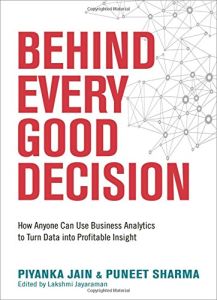Join getAbstract to access the summary!

Join getAbstract to access the summary!
Piyanka Jain and Puneet Sharma
Behind Every Good Decision
How Anyone Can Use Business Analytics to Turn Data into Profitable Insight
AMACOM, 2014
What's inside?
“Simple analytics can actually help you solve 80% of your business problems at a fraction of the cost of complex analytics.”
Recommendation
Experienced data scientists Piyanka Jain and Puneet Sharma offer an exceptionally clear, illustrated guide to data analysis, including meaningful, real case studies and actionable best practices. Jain and Sharma argue that basic analytics – which you can do in Excel – address 80% of all business problems, if you ask the right questions. They say that non-analysts, like managers and marketers, can learn powerful analytical tools easily and conduct their own analyses without a professional analyst or data scientist. Unless you have a particular interest, you can skip chapter five on predictive analytics. Otherwise, getAbstract recommends this commonsense, practical approach to managers, executives, entrepreneurs and professionals who don’t analyze for a living.
Summary
About the Authors
Experienced data scientists Piyanka Jain and Puneet Sharma consult with organizations worldwide on data analysis strategy and predictive analytics.


















Comment on this summary
I need a Document of Transportation calculation